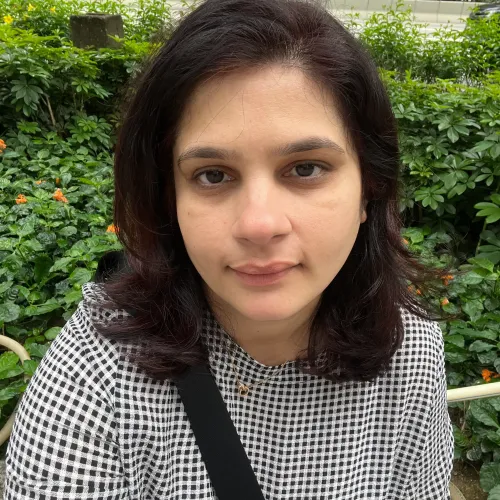
Hong Kong’s Indian diaspora is off to a flying start in 2024 with kite flying festival, Makar Sankranti
- Organised by community group Gujarat Samaj, over 200 people gathered at Clear Water Bay Country Park on January 14 to join the kite flying competition
- The special thread and paper used for the kites have been imported from India; event included a variety of traditional foods associated with the celebration
 Several hundred Indians headed to Clear Water Bay Country Park on January 14 to fly kites. Photo: Handout
Several hundred Indians headed to Clear Water Bay Country Park on January 14 to fly kites. Photo: HandoutDozens of colourful kites streamed across the sky in Clear Water Bay Country Park last week, as their fliers aimed to cut their competitors to the ground.
For the past 30 years, a large community of the Indian diaspora in Hong Kong have gathered on January 14 to celebrate the kite flying festival called Makar Sankranti. The event was organised by the Gujarat Samaj, a group of about 300 families who organise celebrations for Indian festivals throughout the year.
Because the festival is observed in accordance with the lunar calendar, it falls on the same day each year. Dedicated to the sun god, the day marks a turning point in the astronomical and agricultural calendars.
Also referred to as the harvest festival, Makar Sankranti is when the sun enters the zodiac, or constellation, of Capricorn. It signals that the spring season is coming soon, meaning the start of longer days and the sun’s movement towards the north.
Since winter is associated with disease, Makar Sankranti is when people gather on the roofs of their houses to bathe in the sun, in hopes of getting rid of any germs they may be carrying.
Flying kites while taking in the sun is a way of making the day interesting.
Gujarat Samaj’s president, Sonali Pratik Vora, told Young Post: “There are limited places in Hong Kong that allow kite flying on such a large scale, and each year we have around 200 people attending.”
“This year, the theme was 50 years of our establishment. The kites and the threads used to fly them are specially imported from India.”
The history of the Ching Ming Festival, Hong Kong’s tomb-sweeping holiday
These kites are made of a special lightweight paper, with vibrant designs set in a quadrangular shape that gives them better mobility and control. The thread attached to the kites is coated with a mixture of glue, colour and powdered glass, to make them strong and sharp enough to fight each other.
Participants display their kite-flying talents with the aim of cutting the strings of their opponents’ kites. It’s highly competitive but friendly.
This competition not only fostered camaraderie among the diaspora but also brought families together.
“I attended this event for the first time, and I did not manage to learn how to fly a kite, but I tried to learn,” said Darsh Shah, who is 14 and attends the American International School.
“It was nice to meet new people from a similar background and share a new experience. I will definitely be going back next year to learn how to fly a kite.”
To keep the younger children occupied, a kite decorating workshop was conducted on the sidelines. The young artists were free to use their imagination to produce creative and personalised kites made of high-quality paper. Family games like bingo and a treasure hunt also brought the community closer.
An integral part of any Indian celebration is the food, and Makar Sankranti is no different.
“I learned how to fly a kite by myself this year, and I enjoyed the food and snacks as they had ordered food from one of my favourite restaurants – Gaylord,” shared 13-year-old participant Parva Shah.
The Gujarat Samaj organised a lavish spread which included winter foods like undhiyu, a dish of mixed vegetables, and ponkh, a type of fried snack. A traditional food associated with the festival is chikki, a sweet usually made from sesame seeds, peanuts and jaggery. These ingredients are known for their warming qualities that provide the body with instant energy.
